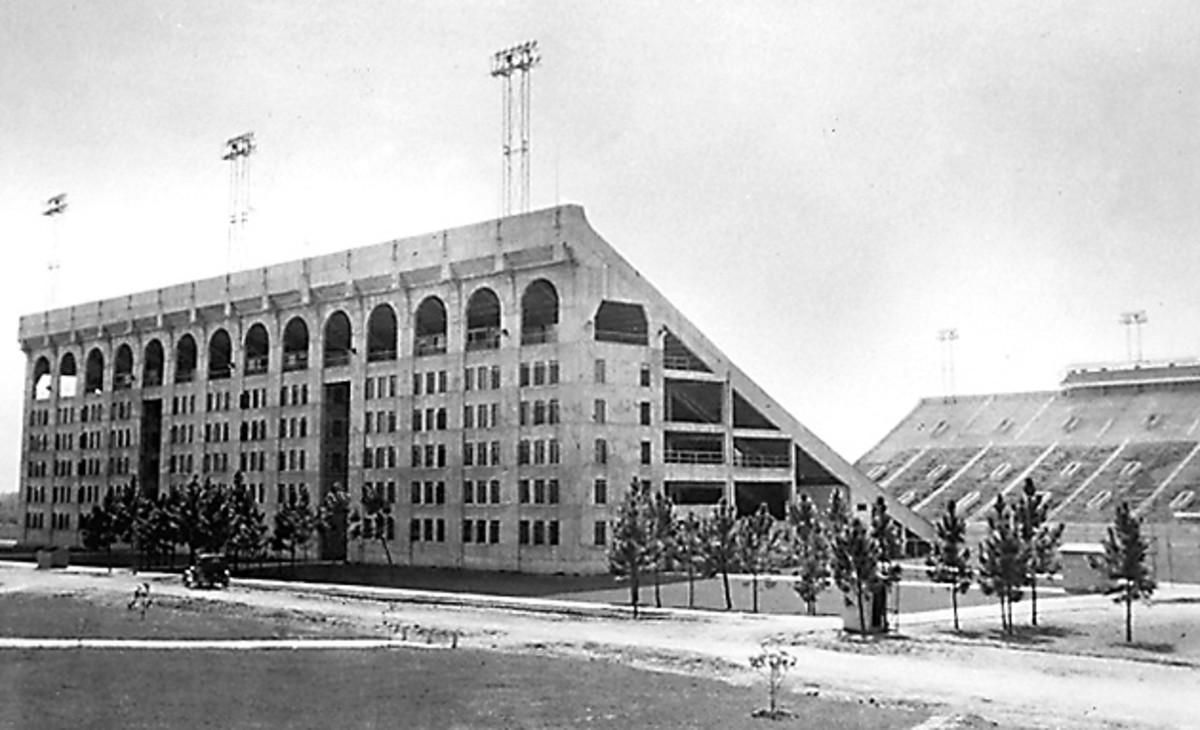Stadium Spotlight: When LSU's Tiger Stadium was literally home

In 1924, LSU students lived and breathed Tiger Stadium. Well, at least about 1,500 of them who lived in the in-stadium dormitory. Now, though, over 102,000 fans come to the 100-year-old venue to reside in one of the more tradition-bound stadium experiences in the nation.
Sure, the original Tiger Stadium, which held 12,000 fans, also served as a student dorm -- it took on that role again temporarily in 1984 during on-campus renovations -- but the continuous upgrades to the venue that serves as a prominent on-campus feature alongside the Mississippi River now has the Tigers playing in one of the six largest stadiums in the nation.
But Tiger Stadium -- or Death Valley, if you prefer -- never lost that original dorm-centric heritage or historical flair.

Trey Trahan, president of Trahan Architects and designer of past Tiger Stadium renovations, tells SI.com the signature framed openings on the structure were originally part of the dormitory building, an embedded piece of architecture that has lived on in the 528 windows.
“It gives it a unique character and connects it to the rest of the campus, the early history of Louisiana French and Spanish,” Trahan says.
With an exterior look preserved for aesthetic purposes, the lower bowl’s original rake has provided more than a visual benefit. Trahan says the steep lower bowl, angled more than would be allowed in present design codes, serves to increase the degree of intimacy, all while holding sound within the bowl with greater intensity.
To be more than spoiler, LSU needs production from QBs; Walkthrough
“That is one of the reasons for the magic in the stadium,” he says. “The intimacy and acoustic reverberation. The more the bowl is enclosed and the higher the walls, the more intimate the space and the louder it is going to be. That is what happens (in Tiger Stadium).”
During a Trahan-designed renovation in 2012, crews redid the west side upper deck and created new arched entries to build symmetry with the rest of the campus. Tiger Stadium has passed through a variety of configurations, going to a horseshoe in 1936, a bowl in 1953 and a venue with an upper deck in 1978. Other recent changes include a new north plaza, a lighting system to turn the upper archways of the north end purple and gold and the south end zone expansion.
Trahan says part of the intrigue in the upper deck includes the views, whether of the river, the state capital, the campus oaks or the clay-tiled campus roofs. And it all comes to life just a touch more at night in Baton Rouge. The tradition of spending an evening under the lights in Death Valley started in 1931, helping LSU create an ambience that improves the team’s winning percentage from the mid-.600s to nearly .800.
• STAFF: Week 9 picks: Can LSU knock off Ole Miss?; more
Sure, architecturally the stadium lights in new ways at night, illuminating the infrastructure and offsetting it with the river. But lights also allow stadiums to create a different on-field ambiance.
“You light the field, you illuminate the large volumes of the stadium,” Trahan says. “In the darkness of the night, it feels more precious.”
Precious. Not always the descriptor you’ll hear for Tiger Stadium, but as fitting as any for a stadium turned dormitory to football cathedral.
Tim Newcomb covers stadiums, design and gear for Sports Illustrated. Follow him on Twitter at @tdnewcomb.
